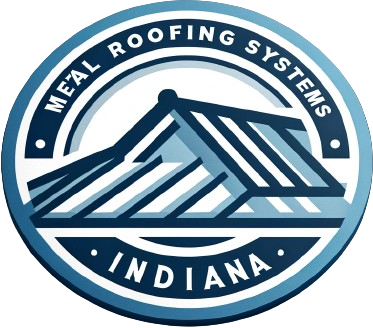Maximizing Your Budget and Return on Insulation in Late Fall
Key Takeaways
- Comprehending Thermal Barriers
- Analyzing Insulation Expenses
- Advantages of Thermal Barriers in Autumn
- Reviewing Your Thermal Barrier Condition
- Investigating Thermal Barrier Options
Understanding Insulation
Insulation plays a crucial role in maintaining a comfortable home environment while significantly impacting energy efficiency. Understanding insulation values helps homeowners choose the right insulation materials, such as fiberglass insulation, foam insulation, spray foam insulation, or cellulose insulation, to optimize their thermal envelope and reduce heat loss. Attic insulation is particularly important as it can dramatically affect a home’s energy consumption. Investing in quality home insulation not only ensures better temperature regulation but also contributes to a substantial budget and return on insulation in late fall. Insulated siding offers another layer of protection, making it essential to evaluate the various insulation materials available to find the best fit for individual needs.

What is Insulation Value?
Insulation value refers to a material’s ability to resist heat transfer, which is crucial for maintaining a comfortable indoor environment. This resistance is measured by the heat transfer coefficient, indicating how well the insulation prevents energy loss during heating and cooling. Effective insulation reduces the cooling load in summer while retaining warmth in winter. Homeowners can expect a favorable return on insulation in late fall as they prepare their homes for the colder months. By ensuring that insulation utilizes recycled materials, individuals can contribute to sustainability while managing their budget and labor costs effectively.
Maximizing insulation value is essential for enhancing energy efficiency in a home. Properly installed insulation minimizes waste by decreasing reliance on heat sources like heaters for climate control. This efficiency translates to significant savings on energy bills, making it a wise investment for homeowners seeking to optimize their budget and return on insulation in late fall. Addressing thermal bridging, where heat escapes through structural elements, can further improve overall insulation effectiveness, providing a comprehensive approach to temperature regulation and energy conservation.
Types of Insulation Materials
Insulation materials come in various forms, each offering unique benefits that cater to different budgets and project requirements. Fiberglass, spray foam, and cellulose are popular options, providing effective barriers against heat flow and radiant heat transfer. Using these materials can significantly reduce energy consumption, leading to lower electricity expenses. This reduction results in a better budget and return on insulation in late fall as homes become more energy-efficient, ensuring optimal performance of heating and cooling systems without overspending.
Selecting the right insulation material impacts long-term costs and energy savings. For energy-efficient houses and passive homes, materials that excel in reducing heat transfer are essential. A good insulation choice maintains comfortable indoor temperatures while minimizing the workload on heating systems. As a result, it enhances the efficiency of appliances such as refrigerators and lowers overall heating expenses. Careful consideration of insulation options aligns with a homeowner’s budget and long-term returns on insulation in late fall, providing a strategic approach to home energy management.
Evaluating Insulation Costs
Evaluating insulation costs requires a thorough understanding of your budget and the potential return on insulation in late fall. Different insulation materials can significantly influence the overall efficiency of your home’s heating system, particularly with radiant heat and heaters working in tandem. Addressing moisture and humidity issues is vital for maintaining insulation status and ensuring long-term insulation savings. Proper siding choices can further enhance insulation improvements while minimizing utilities expenses. Conducting an energy retrofit may be necessary to optimize performance, making it crucial to analyze how insulation costs correlate with your overall home budget and the anticipated return on insulation in late fall.
Analyzing Budget for Insulation Projects
Setting a budget for insulation projects requires careful consideration of various factors. Effective insulation plays a crucial role in determining overall energy efficiency. Return on insulation in late fall can be significant, as this season often presents the cheapest opportunities for installation. With the wide range of insulation options available, including different insulation materials, homeowners must assess their current insulation level. Adequate insulation prevents poor insulation issues that could lead to costly insulation repairs down the line.
The insulation performance you choose directly correlates with potential savings on energy bills. Insulation pricing can vary greatly based on the type and quality of materials selected. Investing in new insulation may yield a higher return if homeowners evaluate their needs and prioritize effective insulation solutions. Fall is an ideal time to analyze the budget and return on insulation in late fall, aligning project goals with available resources to help ensure long-term benefits.
Factors Affecting Insulation Costs
Several factors can affect insulation costs, including the types of materials chosen for an insulation project. Cost-effective insulation materials may provide significant savings while still delivering quality insulation performance. Understanding insulation costs involves evaluating insulation levels and determining the insulation thickness required for optimal results. The demand for insulation can also influence prices; higher demand often leads to increased costs. While some options may seem expensive, investing in top insulation can provide long-term benefits, particularly when considering the budget and return on insulation in late fall.
The quality of insulation plays a crucial role in its effectiveness and longevity. Lower-quality materials might not deliver the desired return on insulation, leading to higher energy bills in the future. Homeowners should consider insulation offers that strike a balance between cost and performance. An insulation project requires careful consideration of the various insulation types available. Choosing the right solution can significantly impact overall expenses and energy efficiency, ensuring that insulation isn’t just a temporary fix but a sound investment.
- The labor costs associated with installation can vary based on the complexity of the project.
- The size of the area being insulated influences the overall cost.
- Local building codes may require specific insulation standards, impacting material choice and cost.
- Seasonal factors can affect pricing; insulation costs may rise during peak construction seasons.
- The condition of existing structures can necessitate additional work, increasing expenses.
- Energy efficiency ratings of materials can provide long-term savings, guiding cost-benefit analysis.
- Government incentives or rebates for energy-efficient insulation can help offset initial costs.
Benefits of Insulation in Late Fall
Preparing your home for the late fall season involves strategic decisions about insulation. Investing in insulation upgrades can significantly impact your property, especially when considering budget and return on insulation in late fall. Homeowners often discover that inadequate insulation leads to higher energy bills and compromised comfort. By assessing your home insulation status, you can identify areas requiring fast insulation fixes, such as blown-in insulation or additional insulation in key areas. Exploring your insulation level choices can lead to effective insulation products that enhance performance. By prioritizing insulation projects, you can achieve substantial long-term savings, making it essential to address any gaps in your current setup with extensive insulation work or external insulation solutions. These proactive steps not only optimize energy efficiency but also yield impressive results in the colder months.
Maximizing Insulation Performance
To achieve excellent insulation performance during late fall, it is essential to evaluate your current insulation levels thoroughly. This evaluation will help determine whether your existing insulation meets good insulation standards or if you require upgraded insulation. Consider consulting with an insulation contractor who can provide insights into the types of insulation materials available, such as board insulation and continuous insulation. These materials can enhance the thermal barrier of your home, maximizing the budget and return on insulation in late fall.
Investing in additional insulation, particularly exterior insulation, can significantly improve energy efficiency. Proper insulation enables your home to retain heat more effectively, leading to reduced energy costs. This insulation discussion highlights the importance of selecting common insulation materials that suit your budget while offering maximum performance. By ensuring that your insulation is up to par, you can enjoy the benefits of a more comfortable living environment and significant long-term savings.
- Assess the current insulation condition and R-value levels in your home.
- Research different insulation types, including fiberglass, spray foam, and cellulose.
- Consider the areas most in need of insulation, such as attics, walls, and basements.
- Look for government rebates or incentives for upgrading insulation.
- Schedule a professional inspection to identify any gaps or weak spots in insulation.
- Compare quotes from multiple insulation contractors for the best value.
- Plan for routine maintenance and checks to keep insulation levels optimal over time.
Long-term Insulation Savings
Investing in high-quality insulation can yield significant long-term savings, especially when considering the budget and return on insulation in late fall. Proper wall insulation, floor insulation, and attic insulation contribute to maintaining a comfortable indoor temperature while reducing energy bills. Many insulation contractors offer blown-in insulation services, which can effectively achieve required insulation levels like R-40 insulation. Homeowners can benefit from evaluating their specific insulation needs to ensure they are getting the most out of their insulation, ultimately leading to an outstanding insulation sale.
Choosing the right insulation materials also plays a crucial role in maximizing long-term savings. Solid insulation retrofits can enhance the performance of existing structures, leading to decreased energy consumption. Insulation pros often recommend the use of quality materials to meet specific requirements. Various insulation companies provide high-quality insulation services that cater to different budgets, ensuring homeowners can find an optimal balance between cost and efficiency. By understanding the true value of insulation, homeowners can make informed decisions that lead to substantial financial returns over time.
Assessing Your Insulation Status
Effective assessment of your insulation status requires understanding various factors, including existing R-values like R-13, R-15, R-19, and R-80 for different areas of your home. Many homeowners benefit from a free insulation inspection to determine if added insulation can enhance performance, especially in ceilings and basements. Insulation installers can help identify areas where you can add insulation, ensuring that you meet budget constraints while optimizing the insulation/radiant barrier effect. Utilizing an insulation savings calculator can assist in projecting potential savings and evaluating the budget and return on insulation in late fall. Considering fiberglass insulation costs relative to these savings can lead to informed decisions about initial wall insulation and other areas needing improvement.

Signs of Ineffective Insulation
Ineffective insulation can lead to noticeable spikes in heating bills during late fall. Homeowners should be aware of staggering cooling costs that signal insulation failure. A professional insulation inspection can help identify issues like inadequate r-38 roof insulation or missing reflective barrier insulation. Even small gaps can compromise energy efficiency. For those working within a budget, considering additional foam insulation may be a viable solution to enhance energy performance. Utilizing resources such as the insulation tax credit may also provide financial relief while improving the home’s comfort.
It is essential to monitor the overall effectiveness of your insulation, as signs of inefficiency often appear as fluctuating indoor temperatures or drafty areas. Engaging in an online insulation ROI analysis can reveal the potential savings and benefits of making upgrades. Programs such as Empower Maryland Insulation and offers from Dominion Energy Insulation can guide homeowners in making informed decisions that align with their budget and return on insulation in late fall. Taking proactive steps not only ensures comfort but also maximizes long-term savings on energy costs.
Conducting an Insulation Checkup
A checkup of your insulation should begin with an assessment of your thermal envelope. Identifying areas of conductive heat loss is crucial as these spots often lead to energy waste and increased heating costs. The budget for this inspection should factor in material costs and the potential need for insulating material upgrades. Understanding the balance of utility costs and maintenance costs can help craft an effective budget plan. This analysis can also highlight the return on insulation in late fall, ensuring that any investments made will contribute to long-term residential energy efficiency.
Examining insulation effectiveness involves checking for thermal envelope badness, which can dramatically influence electricity bills. Homeowners should consider how resistive heat within poorly insulated areas can lead to overwhelming heating costs. A thorough residential energy retrofit may reveal areas that need attention and adjustments to improve overall performance. Investing time and resources into this process not only promotes low energy bills but also maximizes the benefits of insulation, supporting a smoother budgeting process and enhancing the home’s energy efficiency.
Exploring Insulation Solutions
Choosing the right insulation solutions requires careful consideration of your budget and the potential return on insulation in late fall. Effective insulation can significantly reduce monthly utility costs, especially in homes susceptible to high energy bills due to leaky houses. Options that resist airflow and handle moisture can yield energy savings, particularly when coupled with cost-sensitive energy refurbishment strategies. It’s essential to estimate energy savings against labor costs, ensuring that any investment fits within a certain budget. With the right materials, including those that complement electric resistance heat in spring and fall, homeowners can enjoy improved comfort while minimizing cooling expenses.
| Insulation Type | R-Value | Cost per Sq Ft | Moisture Resistance | Energy Savings |
|---|---|---|---|---|
| Fiberglass Batt | 3.1 – 4.3 | $0.50 – $1.00 | Moderate | 20 – 30% |
| Spray Foam | 6.5 – 7.0 | $1.00 – $1.50 | High | 30 – 50% |
| Cellulose | 3.1 – 4.0 | $0.60 – $1.20 | Moderate | 20 – 35% |
| Mineral Wool | 3.2 – 4.0 | $0.70 – $1.20 | High | 25 – 40% |
| Reflective/ Radiant Barrier | Variable | $0.15 – $0.50 | Excellent | 10 – 30% |
Energy-efficient Insulation Options
Selecting energy-efficient insulation options can lead to significant savings in energy costs over time. Proper insulation minimizes heat flow reduction, which directly impacts heating bills during late fall and winter months. A home energy rater can help assess the insulating properties of your current materials and provide tailored energy efficiency advice. While installation costs may vary, the overall energy efficiency can result in a substantial return on insulation in late fall. Balancing budget and return on insulation initiatives ensures home investments remain affordable without sacrificing comfort.
Exploring various insulation materials can reveal opportunities to enhance energy efficiency while managing hidden costs. Effective choices contribute not only to reduced air conditioning costs but also to minimizing the heating load of a home. Understanding the initial building costs associated with specific insulation types is crucial for homeowners. By prioritizing options with superior insulating properties, homeowners can achieve better temperature control and lower energy bills, leading to a more sustainable home environment.
Conclusion
Evaluating the budget and return on insulation in late fall can significantly impact your home’s energy efficiency. By addressing heat loss gain, homeowners can choose effective home energy solutions that provide meaningful monthly energy savings. A well-insulated home not only reduces energy bills but also enhances comfort during the colder months. Prioritizing insulation improvements this season can lead to long-term benefits and a healthier financial outlook as energy expenses decrease over time.
FAQS
How can I assess the budget and return on insulation in late fall for my home improvement project?
When considering the budget and return on insulation in late fall, it’s important to evaluate various factors that can impact your home’s energy efficiency. Late fall is often the cheapest time of year to install insulation, as it helps reduce energy consumption and improve your energy-efficient house. While installing additional insulation results in energy savings, you should also consider that insulation performance varies depending on the type used, such as blown-in insulation or R-19 insulation. By upgrading your insulation, you can significantly reduce energy waste and lower your energy bills—it’s an investment that often pays off in the long run with improved home comfort.
What are the benefits and costs associated with installing ceiling insulation for improved energy-efficiency in late fall?
Installing ceiling insulation today can significantly impact your home energy saver strategy by yielding energy savings through reduced energy consumption. While initial costs, including labor charges and materials like blown-in insulation, can vary with expensive insulation options, the long-term benefits of insulation in a passive house environment, like R-15 insulation or R-80 insulation, can make the investment worthwhile. It’s essential to consider the affordability of adding extra insulation, as insulation aids in enhancing your property’s overall value and comfort.
What factors should I consider when evaluating the potential energy efficiency and costs related to insulation installation in late fall?
When evaluating insulation installation in late fall, it’s essential to consider various factors that impact energy efficiency and costs. Key things to examine include the type of insulation you’re using, like blown-in insulation or R-13 insulation for your basement. Assess how insulation impacts property value, as well as the insulation demand during this season. Remember that while insulation pays off in the long term by yielding energy savings, labor charges can vary. Additionally, be aware that insulation isn’t a one-size-fits-all solution; scheduling the installation in spring might bring different costs and advantages.
What are some things insulation isn’t typically associated with in late fall that might affect my decision on home improvement projects?
When considering insulation for your home in late fall, there are several things insulation isn’t commonly linked to. For instance, blown-in insulation doesn’t just enhance energy efficiency; it can also impact other areas like soundproofing. Additionally, basement insulation isn’t always prioritized, but its role in energy savings yields significant benefits during the colder months. Keep in mind that costs can vary with labor charges depending on the season you choose to install insulation, and the best time for such improvements is often in spring.
What are some unexpected factors related to insulation that aren’t typically considered during the fall that could impact my home improvement decisions?
When deciding on insulation projects as fall approaches, it’s important to remember that some aspects of insulation aren’t usually associated with this time of year. These might include potential labor charges that can rise due to demand as winter nears and the fact that installing insulation now could lead to significant energy savings during the colder months. Additionally, consider how the costs may vary by season; while fall may yield lower material prices, waiting until spring for installation could affect your overall expenses.
How can unexpected factors related to insulation, such as labor charges and costs, influence your decisions in late fall for energy savings?
When considering insulation in late fall, it’s important to recognize that insulation isn’t all about upfront costs; it can yield significant energy savings over time. While assessing labor charges and costs, remember that insulation can impact heating efficiency during the colder months. Make sure to evaluate the long-term benefits that can extend into spring, which might enhance your overall home improvement strategy.
What are some common misconceptions about insulation in late fall that could impact your decision regarding costs and energy savings?
Many homeowners might think insulation isn’t necessary during late fall, but proper insulation yields energy savings throughout the colder months. Additionally, labor charges can rise in the spring as demand increases, which could affect overall costs.
What should you keep in mind regarding insulation in the fall that may not be obvious, especially when considering costs and labor charges before spring?
It’s important to remember that insulation isn’t just a winter concern; many people overlook the costs associated with labor charges when installing insulation in the fall. If you’re thinking about your project for spring, preparing now can help you avoid higher costs later. Additionally, understanding that insulation isn’t always effective if improperly installed can help lead to better energy savings.
What are some overlooked aspects of insulation that aren’t commonly discussed in the fall, particularly about how they could affect costs and labor charges before spring?
When considering insulation, it’s important to remember that there are several factors that insulation isn’t always associated with in the fall. Costs can fluctuate based on the timing of your project, as labor charges may increase as you approach winter. If you’re thinking about insulation for your home, you’re likely to save on energy bills in the spring, making it a worthwhile investment despite upfront costs.
How can the fact that insulation isn’t typically discussed in the fall affect your budgeting decisions on costs and labor charges before spring?
When evaluating insulation, it’s crucial to understand that some aspects of insulation aren’t often highlighted during the fall. This oversight can lead to unexpected costs, impacting your overall budget. Furthermore, labor charges in the fall may differ significantly from those in spring. If you’re planning an insulation project, being aware of these factors can help you make more informed decisions regarding costs before spring arrives.

